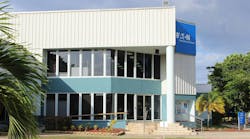In 1920, as The Jobber's Salesman, Electrical Wholesaling's predecessor, opened its doors and launched its very first year of issues, the world was preparing to welcome an onslaught of ground-breaking new electrical inventions, including consumer radio in 1920; the earliest transmission of television signals in 1923; and “talking pictures” in 1927.
Though we take many of these products for granted today, the world celebrated and marveled over these then-revolutionary offerings. So what does the next decade hold for the electrical distribution industry? Following are insights into the products, services and business models poised to take Electrical Wholesaling's readers into the next century.
The economic and legislative landscape: 2010-2020
“Regarding broad economic conditions, the next several years are likely to be very challenging,” says NEMA Director of Economics Timothy Gill. “Though the economy will continue to recover from the severe recession of 2008-09, overall recovery will be slow and probably shaky. Consumers will be less free-spending. Many businesses, particularly smaller, privately-held entities (such as the majority of electrical distributors) without access to public capital markets may well find credit remaining tight as banks rebuild their balance sheets. Construction activity, one of the biggest drivers of electrical equipment, is going to be one of the weaker sectors moving forward. In particular, nonresidential construction projects in the retail, office and lodging spaces are likely to struggle because of rampant overbuilding during the boom years and limited funding availability for developers who want to take on projects even in a challenging environment.”
Despite these conditions, a number of positive factors are also in play. The U.S. Congressional Budget Office forecasts national unemployment to decline from its high of nearly 10 percent in 2010 and level off at about 5%-6% from 2014-2020, which is expected to lead to increased hiring as a function of continued economic growth. And the American Recovery and Reinvestment Act (ARRA), signed into law in February 2009, is already having far-reaching effects for the electrical products market, with tax credits, grants, stimulus funds, and other subsidies driving green projects in numerous states, spurring manufacturer research and development of green technologies and allowing all of the nation's sectors to take greater advantage of the benefits of energy-efficient lighting, motors, HVAC and other electrical products.
Products of the future
With little surprise, electrical distributors will be handling more energy-saving technologies over the coming decade, from increasingly green motors to sophisticated LEDs, ceramic metal-halide lamps, daylight harvesting lighting systems and smart building technology.
On the lighting side, which represents an estimated 20 percent of the typical electrical distributor's market basket, LEDs and solid-state lighting technology are poised for explosive growth in the coming decade. With a bevy of new LED system solutions as well as easy-to-install replacement products becoming increasingly available from the market's range of manufacturers, the LED market — which today represents less than two percent of all lighting-related sales — is expected to account for a significantly bigger ticket in the next five-to-10 years. Department of Energy SSL Portfolio Manager Jim Brodrick says aside from their brightness, high efficiency and long life span, “solid state technology is truly unique in that it does not need to penetrate a ceiling, is easily dimmed, enables color-changing capabilities, and is very rugged and durable because it does not involve as much breakable glass as conventional sources.”
As a result, SSL is penetrating more niche and general lighting applications every day and offers the marketplace an exciting and flexible new range of solutions that don't necessarily look or perform like traditional lighting. While pricier than traditional sources today, Brodrick forecasts that LED pricing will decline as the market achieves economies of scale. He is currently leading a joint team of government representatives and lighting manufacturers in creating a roadmap focused on bringing the cost of LED luminaires down by 70 percent within the next five years.
On the mechanical side of the distributor business, many experts see energy control as the next big opportunity for lucrative participation by distributors. Demand response technology, time-of-day energy pricing and other tools designed to monitor and help optimize a facility's comprehensive use of energy — from its lighting, water, refrigeration, elevators, HVAC and other systems — help utility companies to plan their distribution more efficiently and result in financial rewards to customers who partner in this proactive process with them. Says Bernie Erickson, division manager of Perth Amboy, N.J.-based Facility Solutions Group, a national provider of electrical products, services, and energy management solutions, “The electrical distributor who can add value by understanding and serving the energy controls business, selling the control, and being the single conduit overseeing the customer's mechanical service and utility providers will benefit greatly on this new frontier in the coming decade.”
Green is in
Green will definitely continue to be a reigning theme among all of the new technologies that will be pushed and pulled through the channel in the coming decade. But distributors should be forewarned of the back-end of this trend, says Bill Attardi, a 40-year veteran of the industry and president of Attardi Marketing, Colts Neck, N.J. “The combination of higher quality, more energy-efficient, and longer-lasting technologies (such as LEDs, CFLs and induction lamps) being offered across the entire electrical products industry portends lower unit sales and more limited after-market opportunities,” he says. “The players who will drive growth in this scenario will be those who best control the “front end” of this equation — from the manufacturers who continuously introduce innovative lighting systems and other electrical products to the distributors who do their best to support and promote those upsell solutions.”
NEMA's Timothy Gill agrees. “Opportunities for distributors are definitely most likely to be found in the ongoing shift toward a greener economy,” he says. “For example, the ARRA provides significant funding for environmental and energy efficiency projects such as high performance building retrofits. These, rather than the traditional sources of electrical equipment demand, will be the growth area in the near term future. Recycling (of products such as batteries, compact fluorescent lamps, thermostats, etc.) is also another area ripe with opportunities for distributors.”
Incentives abound
As history has shown, utility rebates have been responsible for boosting the sales of many energy-efficient electrical and building envelope products in the last 20 years to 30 years. And while rebate levels have waxed and waned over that time as a function of the utility industry's changing direction and balance sheet, U.S. Energy Information Administration data and industry experts agree we are currently in a time of aggressive demand-side management opportunity nationwide. In addition to ongoing deregulation activities, utilities in states that have never traditionally offered rebates or incentives are coming on board with programs for the first time, while many of the more active utility companies nationwide are introducing aggressive new programs involving such offerings as immediate rebates and on-bill financing. Says Leon Mowadia, Jr., national accounts manager for Facility Solutions Group, “For example, on a $100,000 upgrade job, an end user could receive an on-the-spot utility rebate of $50,000 right up front and then a 0%-interest loan for the remaining $50,000, which will be paid off on the customer's bill over time right out of their energy savings, so they won't even feel it.”
Though seemingly at odds with a utility's apparent goal of selling more electricity, these incentives are actually often the cheapest way for utilities to meet their capacity issues and avoid the need to source new or generate more supply. Some of these exciting new programs are being funded through government stimulus money, so distributors are encouraged to familiarize themselves with the utility programs, energy grants, loans and stimulus activities in their service area.
Value-added approach
The demonstrated success of distributor business models that emphasize customer partnerships and bundling of services reveals a bright alternative to the traditional stock-and-sell approach, where distributor margins are continually eroded and growth opportunity can be limited. Mowadia of Facility Solutions Group says his company brings its customers a full package of services including product expertise, inventory and services such as maintenance, online budgeting, ordering and inventory management. “By bringing together all of the right providers and managing all of the various e-commerce and information systems for the customer, they are freed up to focus on what they do best — be it running their warehouse or retail store — and can rest assured that their electrical systems, components and processes are being procured and managed in the most accurate and efficient way possible,” he says. On top of supplying the necessary products, Mowadia says those electrical distributors who can deliver a “one-stop shop” for electrical contractors, utilities and end users will be best positioned for success in the next decade.
From green themes to energy control and service bundling, the coming decade offers a range of innovative new products and business practices that hold great promise and opportunity for the distributor market.
Susan Bloom, a freelancer and consultant, is an 18-year veteran of the lighting and electrical products industry. She can be reached at [email protected].








